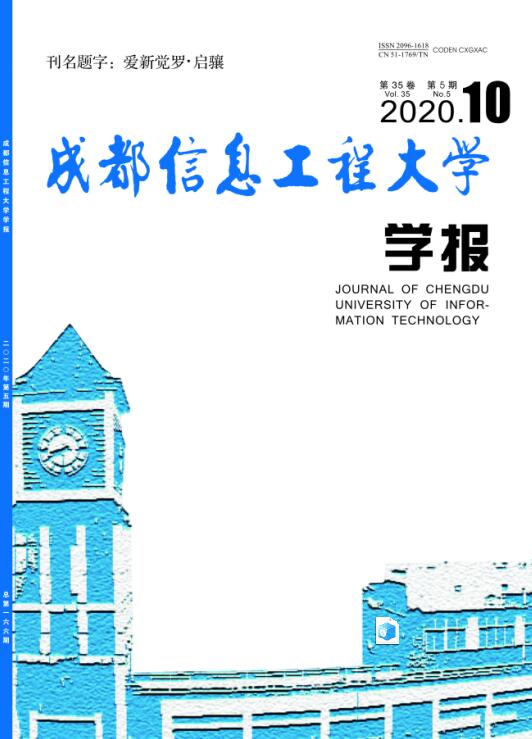PAN Linyan,LIU Wei,PAN Jieyu,et al.Carbon Peak Pathways of Key Industries in Chongqing’s Industrial Sector based on Long-range Energy Alternatives Planning System[J].Journal of Chengdu University of Information Technology,2025,40(02):245-250.[doi:10.16836/j.cnki.jcuit.2025.02.017]
基于长期能源替代规划系统模型的重庆市重点行业碳达峰路径研究
- Title:
- Carbon Peak Pathways of Key Industries in Chongqing’s Industrial Sector based on Long-range Energy Alternatives Planning System
- 文章编号:
- 2096-1618(2025)02-0245-06
- Keywords:
- carbon peak; LEAP model; scenario analysis method; key industries; Chongqing
- 分类号:
- X321
- 文献标志码:
- A
- 摘要:
- 重庆市作为中国老工业之都,工业能源供需矛盾突出,加快推进重庆市实现工业领域碳达峰具有现实意义。通过设置4级活动水平构建LEAP模型,结合情景分析法设置基准情景、节能情景、低碳情景、节能+低碳情景4种情景,模拟2021-2040年重庆市工业领域重点行业碳排放达峰情况,并结合单因子分析法探究重庆市碳减排路径。结果表明:(1)重点行业均可实现2030年前碳达峰,基准情景、节能情景、低碳情景、节能+低碳情景下分别于2030、2029、2029、2027年达峰,峰值大小依次为122.43、117.06、115.40、112.98 MtCO2。(2)工业增加值由高速率转为低速率时,峰值将减少2.44~4.12 MtCO2,工业增加值对碳减排贡献最大,其次为重点行业能源结构、重点行业增加值占工业增加值比重、重点行业能源强度。(3)建议参考基准情景发展模式,将推动工业经济高质量增长作为实现重点行业碳达峰目标的首要发展路径,加快工业能源结构绿色低碳转型,提高工业能源利用效率,降低工业能源强度。
- Abstract:
- As the capital of my country’s old industry, Chongqing city has a high contradiction between supply and demand in industrial energy and promoting the carbon peak of Chongqing to realize the industrial field. Build the Leap model through the level of four-level activity level, combined with the four scenarios of the scenario analysis method, setting the benchmark scene, energy-saving scenario, low-carbon scenario, energy saving+low-carbon scenarios. Simulate the carbon emissions of the key industry in the industrial field of Chongqing from 2021 to 2040 and explores the carbon emission reduction path of Chongqing through single-factor analysis. The results show that:(1)The key industries can achieve carbon peaks before 2030. The benchmark scenario achieve carbon peaks in 2030, with a carbon peak value of 122.43 MtCO2.The energy-saving scenario achieve carbon peak in 2029, with a carbon peak value of 117.06 MtCO2.The low-carbon scenario achieve carbon peak in 2029, with a carbon peak value of 115.40 MtCO2.The energy saving+low carbon scenario achieve the carbon peak in 2027, and the carbon peak value is 112.98 MtCO2.(2)When the industrial added value is changed from a high rate to a low rate, the peak value will decrease by 2.44-4.12 MtCO2, which contributes the greatest contribution to carbon emission reduction, following by the energy structure of key industries, the value-added value of key industries in the industrial added value, and the energy intensity of key industries.(3)It is recommended to refer to the development model of the benchmark scenario, which will promote the high-quality growth of the industrial economy as the primary development path to achieve the goal of carbon peaks in key industries, continuously accelerate the transformation of green low-carbon transformation of industrial energy structure, improve the efficiency of industrial energy utilization, and reduce industrial energy intensity.
参考文献/References:
[1] 陈军华,李乔楚.成渝双城经济圈建设背景下四川省能源消费碳排放影响因素研究—基于LMDI模型视角[J].生态经济,2021,37(12):30-36.
[2] 臧宏宽,杨威杉,张静,等.京津冀城市群二氧化碳排放达峰研究[J].环境工程,2020,38(11):19-24.
[3] 何永贵,于江浩.基于STIRPAT模型的我国碳排放和产业结构优化研究[J].环境工程,2018,36(7):174-178.
[4] 中国政府网.在第七十五届联合国大会一般性辩论上的讲话[EB/OL].https://www.gov.cn/gongbao/content/2020/content_5549875.htm,2020-09-22.
[5] 中国政府网.习近平主持召开中央财经委员会第九次会议[EB/OL].https://www.gov.cn/xinwen/2021-03/15/content_5593154.htm,2021-03-15.
[6] 刘彦迪.2030年中国碳排放达峰区域性预测与影响因素分析[D].济南:山东大学,2020.
[7] 市经济信息委.关于印发重庆市工业领域碳达峰实施方案的通知[EB/OL].http://jjxxw.cq.gov.cn/zwgk_213/zcwj/qtwj/202301/t20230129_11542161_wap.html,2023-01-28.
[8] 燕东,刘枫,叶鹏飞,等.碳达峰情景预测的主要方法及模型[J].环境保护与循环经济,2021,41(7):97-101.
[9] Kumar S.Assessment of renewables for energy security and carbon mitigation in Southeast Asia:The case of Indonesia and Thailand[J].Applied Energy,2016,163:63-70.
[10] 洪竞科,李沅潮,蔡伟光.多情景视角下的中国碳达峰路径模拟——基于RICE-LEAP模型[J].资源科学,2021,43(4):639-651.
[11] 吴唯,张庭婷,谢晓敏,等.基于LEAP模型的区域低碳发展路径研究——以浙江省为例[J].生态经济,2019,35(12):19-24.
[12] Emodi N V,Emodi C C,Murthy G P,et al.Energy policy for low carbon development in Nigeria:A LEAP model application[J].Renewable & Sustainable Energy Reviews,2017,68:247-261.
[13] 苗安康,袁越,吴涵,等.中国省域碳达峰路径与政策[J].环境科学,2023,44(8):4623-4636.
[14] 李楠,刘弯弯,朱书涵,等.湖南省工业领域碳减排与空气质量改善协同[J/OL].https://doi.org/10.13227/j.hjkx.202303057,2023-10-18.
[15] 任建兰,徐成龙,陈延斌,等.黄河三角洲高效生态经济区工业结构调整与碳减排对策研究[J].中国人口·资源与环境,2015,25(4):35-42.
[16] Akpan U,Isihak S,Maduekwe M.Road transport energy consumption and vehicular emissions in Lagos,Nigeria:An application of the LEAP model[J].Transportation Research Interdisciplinary Perspectives,2020,6:9-18.
[17] 杨森,黄莹,焦建东,等.基于LEAP模型的广州交通领域能耗及空气污染物排放分析[J].新能源进展,2021,9(1):69-75.
[18] 庞可,张芊,马彩云,等.基于LEAP模型的兰州市道路交通温室气体与污染物协同减排情景模拟[J].环境科学,2022,43(7):3386-3395.
[19] 洪竞科,李沅潮,郭偲悦.全产业链视角下建筑碳排放路径模拟:基于RICE-LEAP模型[J].中国环境科学,2022,42(9):4389-4398.
[20] 田川,冯国会,李帅等.基于情景分析法的辽东湾新区区域建筑节能减排潜力预测研究[J].沈阳建筑大学学报(自然科学版),2021,37(3):542-548.
[21] Mirjat N H,Uqaili M A,Harijan K,et al.Long-term electricity demand forecast and supply side scenarios for Pakistan(2015-2050):A LEAP model application for policy analysis[J].Energy,2018,165:512-526.
[22] Masoomi M,Panahi M,Samadi R.Scenarios evaluation on the greenhouse gases emission reduction potential in Iran’s thermal power plants based on the LEAP model[J].Environmental Monitoring and Assessment,2020,192(4):235.
[23] 马晓明,段滢,李鑫,等.深圳市电力部门碳减排路径研究[J].生态经济,2018,34(2):24-29.
[24] 王冰妍,陈长虹,黄成,等.低碳发展下的大气污染物和CO2排放情景分析-上海案例研究[J].能源研究与信息,2004,20(3):137-145.
[25] Wen Z,Chen M,Meng F.Evaluation of energy saving potential in China’s cement industry using the Asian-Pacific Integrated Model and the technology promotion policy analysis[J].Energy Policy,2015,77:227-237.
[26] Ke J,Zheng N,Fridley D,et al Potential energy savings and CO2 emissions reduction of China’s cement industry[J].Energy Policy,2012,45:739-751.
[27] 宋鹏,张慧敏,毛显强.面向碳达峰目标的重庆市碳减排路径[J].中国环境科学,2022,42(3):1446-1455.
[28] Shan Y L,Guan Y,Hang Y,Zheng H,et al.City-level emission peak and drivers in China[J].Science Bulletin,2022,67(18):1910-1920.
备注/Memo
收稿日期:2023-10-18
基金项目:国家级大学生创新创业训练计划资助项目(2022106 21043)
通信作者:刘伟.E-mail:welingq@163.com
